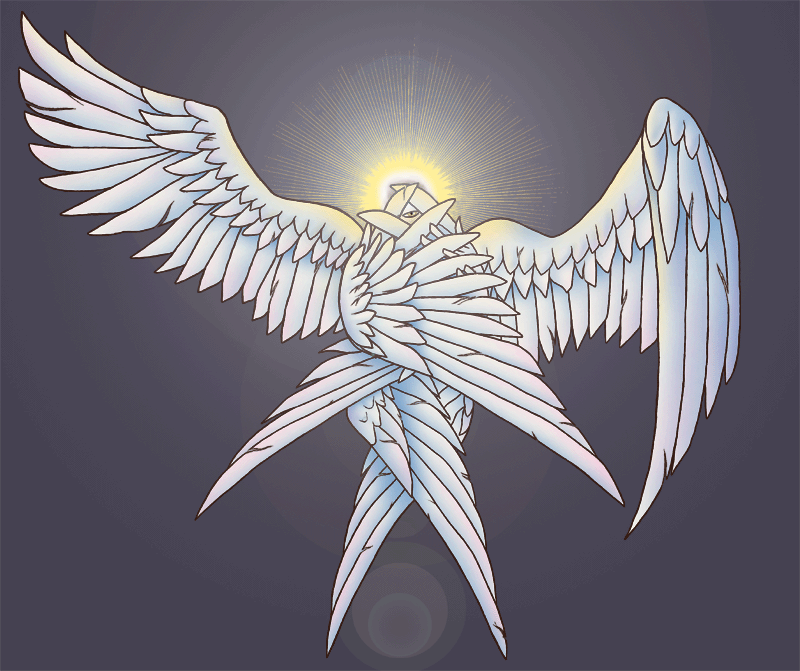Cherubim are often depicted in religious texts and art as angelic beings with multiple wings and various animalistic features. In Judeo-Christian tradition, they are often associated with guarding the Garden of Eden and the Ark of the Covenant. They’re considered part of the angelic hierarchy, serving as intermediaries between humans and the divine.
In various religious and cultural traditions, cherubim are depicted as having specific roles and duties.
In Judeo-Christian tradition, cherubim are often associated with guarding sacred spaces or objects, such as the Garden of Eden after Adam and Eve were expelled, and the Ark of the Covenant. They are sometimes depicted as wielding flaming swords to prevent unauthorized access to these holy places.
Cherubim are also seen as messengers of God, delivering divine messages or visions to humans. For example, in the book of Ezekiel in the Hebrew Bible, cherubim are described as accompanying the chariot of God, symbolising the divine presence.
Additionally, cherubim are sometimes depicted as surrounding the throne of God, serving as guardians or attendants in the heavenly realm. Their multiple wings and animalistic features are thought to symbolise their celestial nature and their proximity to the divine.
Overall, cherubim play a significant role in religious iconography and theology, representing aspects of divine protection, communication, and majesty.
The duties of cherubim vary across religious and cultural interpretations. In general, they are often associated with guarding sacred spaces or objects, conveying divine messages, and serving as intermediaries between humanity and the divine. They’re also sometimes seen as symbols of God’s presence or guardians of the divine throne.
Cherubim and seraphim are both types of celestial beings found in religious texts and traditions, but they have distinct characteristics and roles.
Cherubim, as previously mentioned, are often depicted as angelic beings with multiple wings and sometimes animalistic features. They are associated with guarding sacred spaces or objects, conveying divine messages, and serving as intermediaries between humanity and the divine.
Seraphim, on the other hand, is described in the Bible as having six wings and being in the presence of God, constantly praising and worshipping him. The name “seraphim” is derived from the Hebrew word meaning “burning ones,” which may symbolise their fervent devotion to God. In the book of Isaiah, seraphim is described as flying around the throne of God, calling out “holy, holy, holy” in worship.
While both cherubim and seraphim are considered part of the angelic hierarchy and are associated with the divine realm, they have different roles and characteristics within religious texts and traditions.















